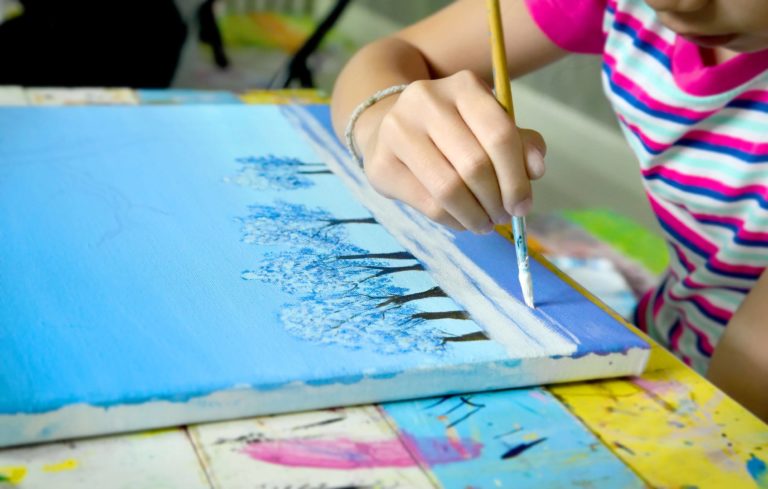Since the induction of the “No Child Left Behind Program” in 2001 and the push to focus on the “Common Core Learning Standards,” many school systems have centered their curriculum on testable subjects like math and ELA. There has also been more emphasis placed on teaching the STEM (science, technology, math, and engineering) subjects in the classroom, which leaves the arts neglected. Whether the arts are being pushed back because the focus is on other topics or because of tight budgets, incorporating the arts into the classroom can provide students with many benefits.
What is Arts Integration?
According to the Institute for Arts Integration and STEAM, structuring a school (or classroom) around the arts “is an approach to teaching and learning through which content standards are taught and assessed equitably in and through the arts.” In other words, the process is first to pick a topic that you want to teach, then collaborate with art educators to align the standards. Next, prepare the lesson to ensure that there is truth to both subjects. Finally, assess student work in both areas.
Teaching in and through the arts means to ask yourself, “How can I integrate the arts and the content area that I’m teaching while aligning to the standards?” If you cannot do both, then you do not have arts integration.
Why are the Arts Beneficial for Students?
Arts integration can support student learning in a variety of ways. Research conducted by The Arts Education Partnership found that students who received arts-integrated lessons versus traditional lessons improved their ability to assess their learning, as well as had greater intrinsic motivation and motivated students to continue learning. The Institute for Arts Integration and STEAM found more astounding results, such as a 10 percent rise in student achievement. They also found that when the arts are intentionally integrated, students become more active participants in their learning and can work through problem-solving and innovate new solutions.
Overall, research has found three main points when understanding the benefits of arts integration. They are: improvement of test scores, creating equity, and an increase in parental and community engagement.
Goals of Art Integration
To successfully integrate the arts, there are a few practical approaches that you should keep in mind.
Create a Visible Vision
First, you need a visible vision that supports the arts. You can create a mural in the school entryway or share students’ artwork; the goal is to create an environment that values the arts.
Align with Standards
Ensure that all of the integrated art lessons are aligned with the art standards. Try and embed the arts learning throughout the entire curriculum.
Developed Partnerships
Build community-wide support for the arts. Expand your sources and connect with artists, art educators, and such to cultivate community and art partnerships.
How to Integrate the Arts into Student Learning Experiences
While the arts may have been a part of your daily curriculum when you were in school, some of today’s schools will have to take it upon themselves to integrate the arts into students’ learning experiences again. Here are a few simple ways to incorporate the arts into your classroom.
Visual Arts
Art is a powerful tool for communicating, especially for the students who have a difficult time expressing their feelings through writing or speaking. Drawing can help students clarify their thoughts, ideas, or feelings. Students can use visual art to create images or artifacts to help them dig deeper into the concepts they are learning.
Drama
Role-playing is another way for students to express themselves more deeply. They can create a dance, song, or performance. Music and art go hand-in-hand, so you can use a song for just about any concept that you want students to learn.
Technology
Yes, technology can be used in arts integration. Students can use apps to create a masterpiece, record themselves performing, or create a vlog about a piece of artwork.
Arts integration is another pathway for students to demonstrate what they know. When you incorporate the arts, you are ensuring that all learners’ needs are being met. So, how do you integrate the arts into your classroom?




